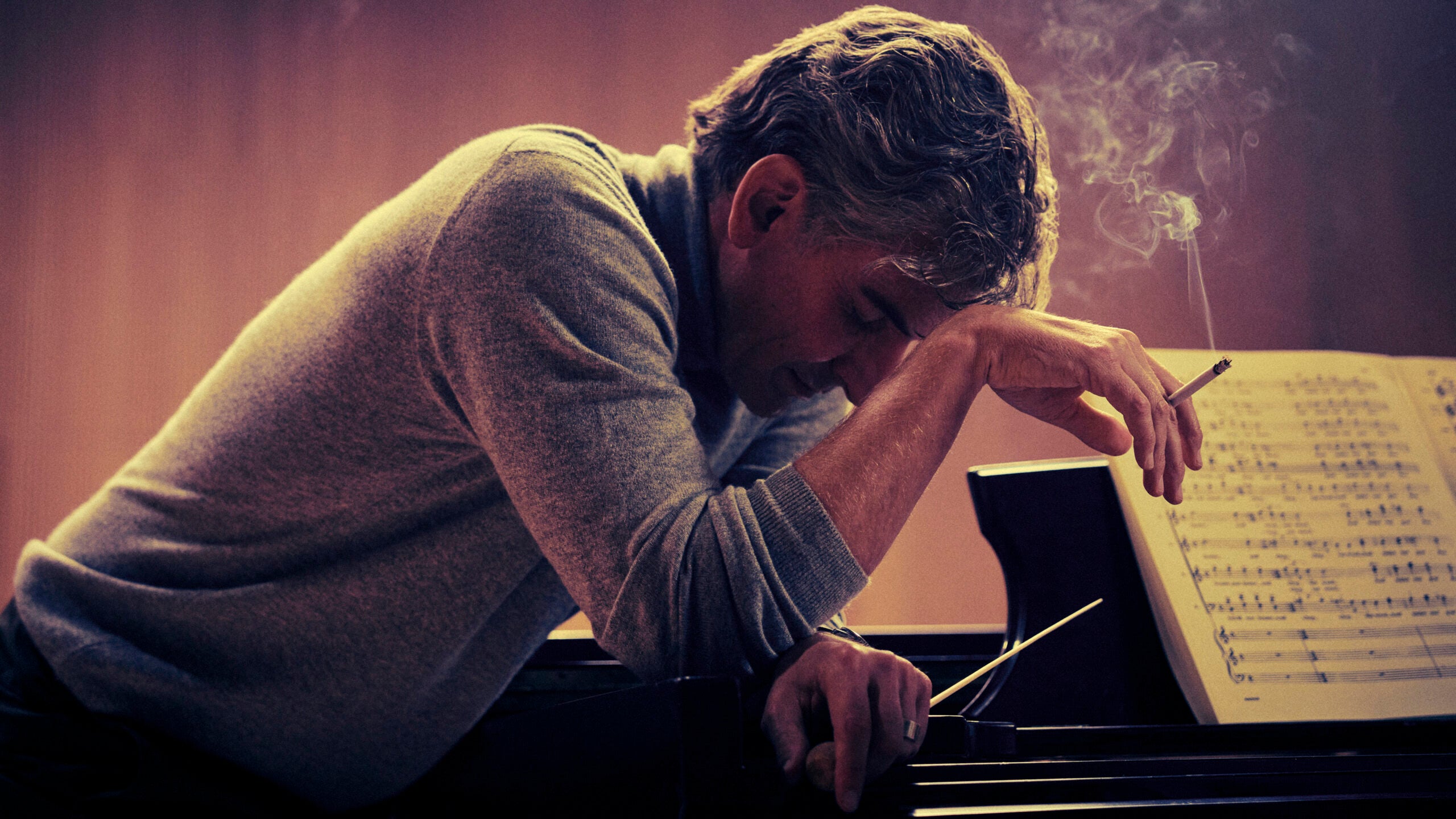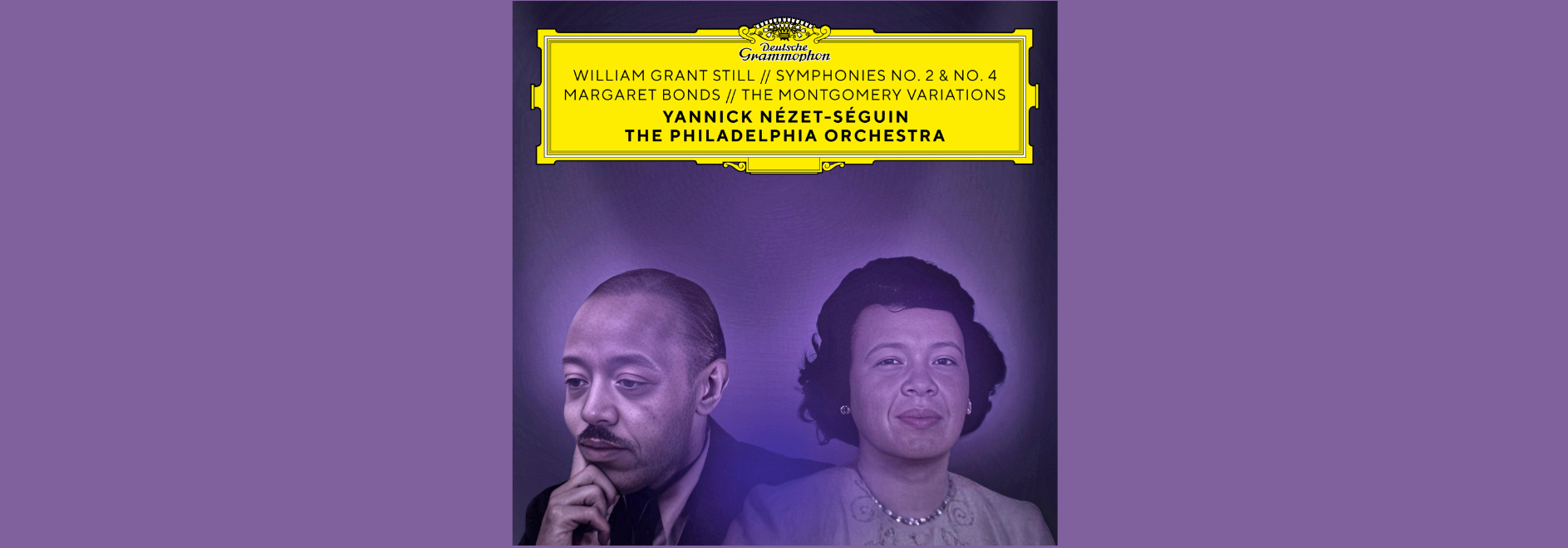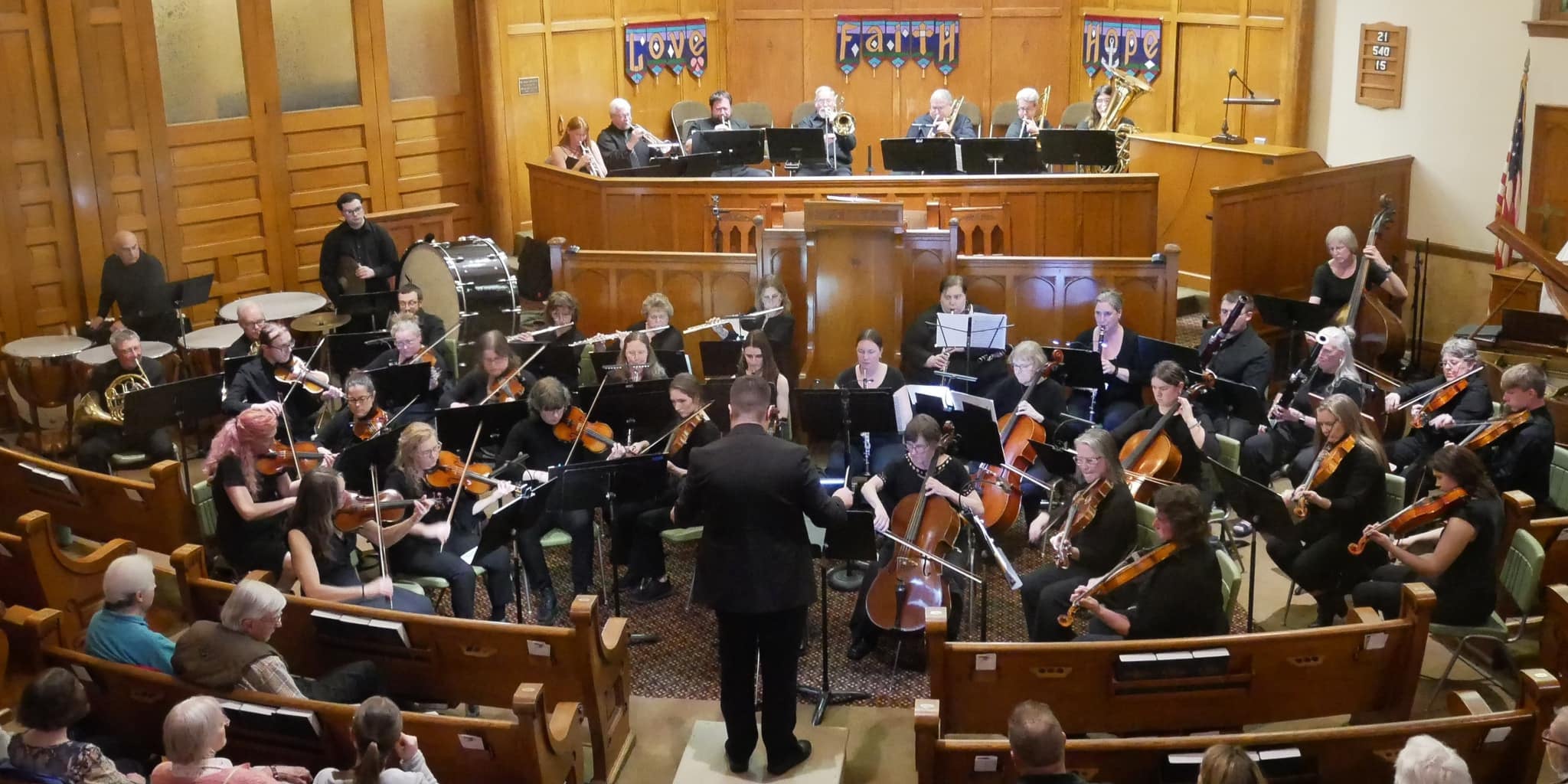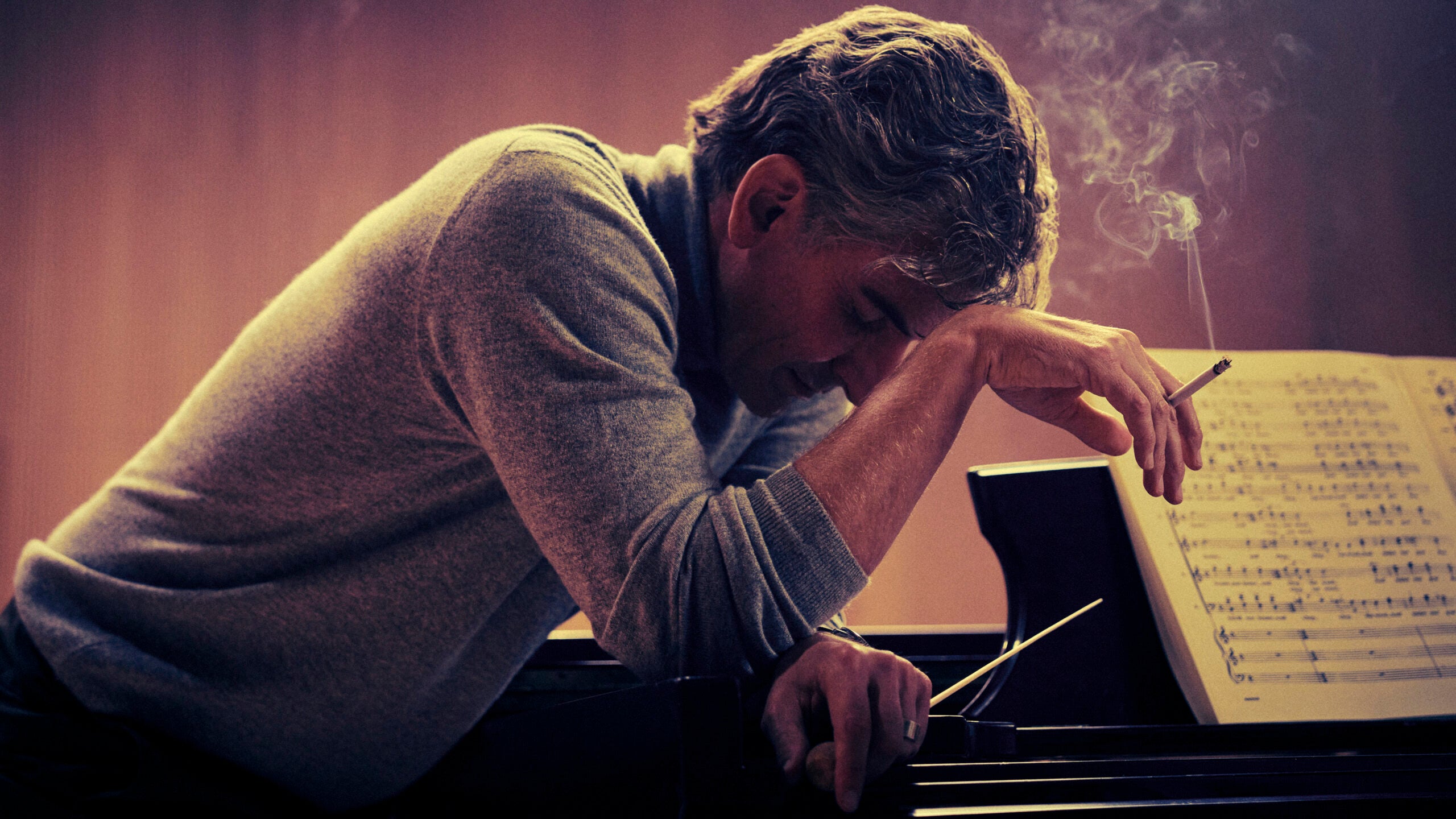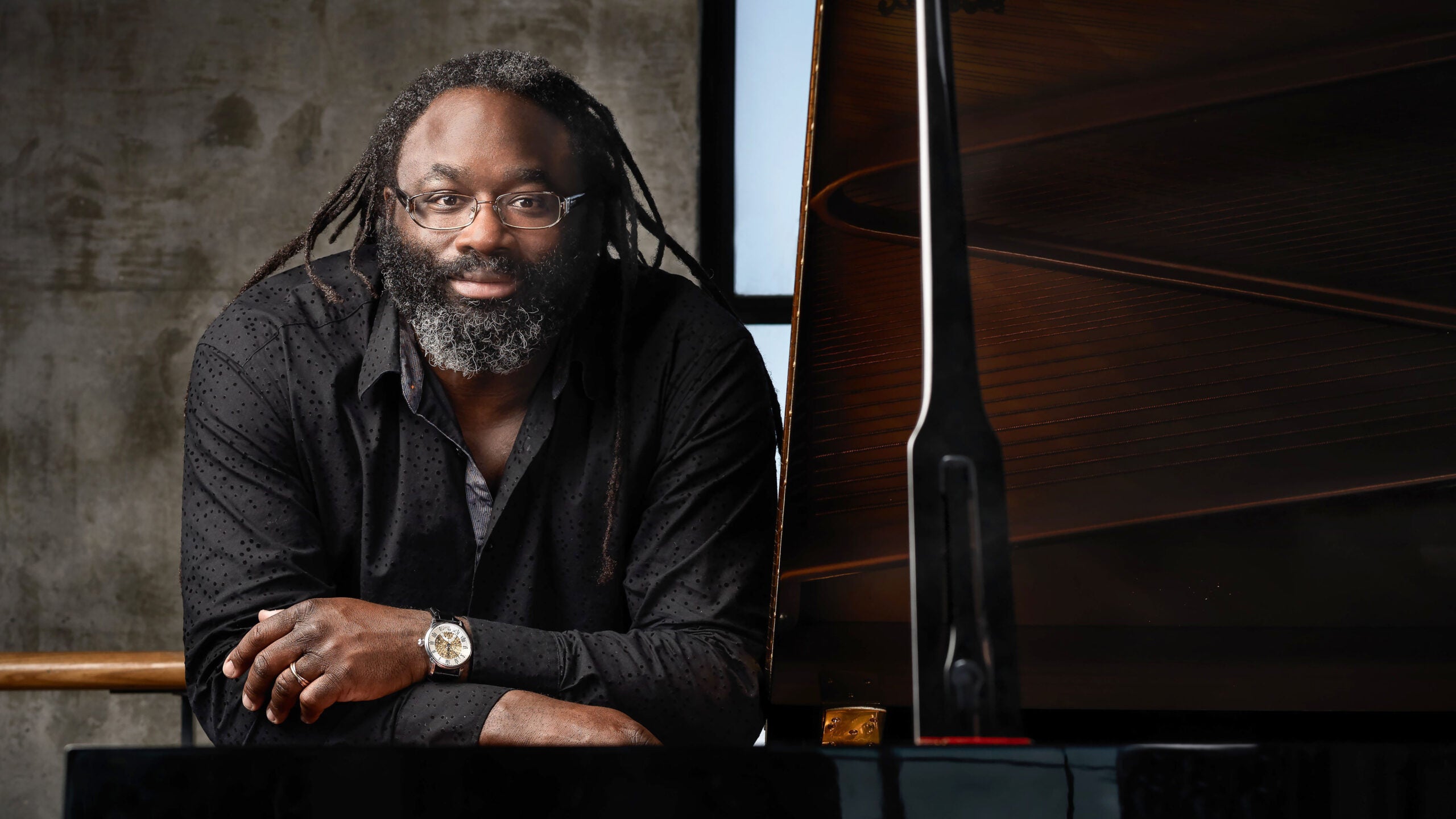As a child, actor Bradley Cooper was so fascinated by music conductors that he asked for a baton as a birthday gift. He remembers whirling his arms around in his bedroom — and feeling like a wizard.
“There was something magical about being able to physically move to a rhythm,” he says. “And then, in my imagination, [to] be able to perceive that I was actually harnessing and commanding that music. I mean, it was really like a magic trick, every time.”
Cooper channeled that energy as the co-writer, director and star of Maestro, a film about the internationally famous composer and conductor Leonard Bernstein. Widely considered the first great American conductor, Bernstein led the New York Philharmonic from 1957 to ’69, and also composed classical music, as well as music for Broadway and film.
News with a little more humanity
WPR’s “Wisconsin Today” newsletter keeps you connected to the state you love without feeling overwhelmed. No paywall. No agenda. No corporate filter.
Cooper says conducting as Bernstein in the film was tricky: “I had no desire to imitate what he was doing, because that would have been a soulless, in my experience, endeavor.” Instead, the actor consulted with conductor Yannick Nézet-Séguin, who helped him find his own rhythm on the podium.
Nézet-Séguin is the artistic and music director of the Philadelphia Orchestra, music director of the Metropolitan Opera Orchestra, and music director and principal conductor of the Orchestre Métropolitain in Montreal. Though he was 15 when Bernstein died, Nézet-Séguin refers to the conductor as, “hands down, always my greatest conducting model.”
“I always felt even when I was a teenager, that this is the way I wanted to express music on the podium, just expressing with all my body and not being shy of showing my emotions on the podium,” Nézet-Séguin says.
For Nézet-Séguin, Bernstein’s influence is both professional and personal. He notes that Bernstein’s sexuality — he was married to a woman but also had relationships with men — helped open doors for others in the classical music field.
“The fact that he lived this and didn’t hide it completely, well, it allowed people like [conductor] Michael Tilson Thomas or like me to now live it fully, have husbands,” Nézet-Séguin says. “This is … one of the many reasons why this film is so important. It’s not so much that it’s about a bisexual or a gay character, but more about how complex it is.”
Interview highlights
On the centerpiece of the film, the final movement of Mahler’s “Symphony No. 2”
Nézet-Séguin: This, just from a logistics point of view, for a conductor, it’s the most complex. Now, this specific moment also comes at the very end of a very long symphony that’s about 90 minutes long. So you’re almost one hour and a half into blood and sweat and tears of some of the most soulful and profound music that’s ever been written. And as a conductor, you have to keep your mind cool because you need to still direct the traffic … well, but also be completely emotionally involved in the meaning of this music.
Cooper: There’s this incredible video of Lenny conducting this piece in 1973 in Ely Cathedral with the London Symphony Orchestra, which is exactly what we replicated. But I always knew that I wasn’t going to just imitate what he was doing. It was actually finding that middle ground. And Yannick was in particular so supportive of me, as Lenny, finding whatever that mode of conducting is, which was, of course, infused entirely by not only the interpretation of the score, which is what we did in terms of tempo, but also in terms of his gesticulating and all of that. But having it be original because the goal was to conduct in real time this piece and record it.
On the theatricality that Bernstein displayed while conducting
Cooper: Bernstein himself, he was often asked about his antics, as you know, on the podium. And he would always talk about how it was all about his relationship to the orchestra, and to the musicians that he was making music with, and not about him performing for the audience. … At any moment, [he] was always just completely in the music.
Nézet-Séguin: Maybe it’s something that Lenny had been accused of in his lifetime. Because, of course, he was a completely larger than life person and therefore a larger than life conductor. … Well, I can say really, like Bradley just said, that no orchestra in the world would respond to a conductor who would be theatrical in [that] way of performative for an audience. This is something that many people forget. They think that the conductor is so aware of the audience that they do something for them. But then orchestras smell that miles away and they stop looking at the conductor, and then therefore the conductor cannot have a career, or at least not a career in the scope that Bernstein did.
On Bernstein’s signature jumping on the podium while conducting
Cooper: Yeah, there’s wonderful photographs of him levitating above the podium and many recordings of one being able to hear his feet stomping on the podium after having been a foot in the air. So, yeah, that was one of his trademark sonic gifts to his conducting.
Nézet-Séguin: It’s still taught that conducting should be this and that, and in a box, and not too much of this, and not too much of that. And I don’t want here to insult any great conducting teachers around the world. They’re doing amazing work. But sometimes we forget that conducting is about just living the music. And at that moment, that’s what Lenny taught all of us in a way. At that moment, the music is jumping. … It’s almost like the whole world is waking up. So one needs to illustrate that and why not jump, you know? As long as it’s organic.
On conducting with an open mouth
Nézet-Séguin: I cannot imagine conducting [with my] mouth closed, especially not when there’s a chorus. I mean, conductors, we don’t sing. … Lenny did that a lot and I think we all do it, because it’s kind of breathing. …It’s letting even more the sound feeling open, when we let our mouth open. … The arms are open, the heart is open, and therefore the mouth is just opening up — all that’s possible for one of the greatest climactic moments in the music.
Cooper: I did notice that I opened my mouth a lot, just conducting to a recording of anything. And thank goodness Lenny did that. In the video from 1973, as I recall, he’s only opening his mouth when he’s actually saying the words of Mahler’s “Resurrection” that the chorus is saying. …What’s in the movie is the last take. The way it went down is I really messed up the whole first day, because I had entered into it with fear and 99% of the movie I went into fearlessly. But I had set up all of these cameras really thinking that deep down I wasn’t going to be able to conduct it and I’d have to edit, create a scene out of in the editing room. And so I went into it already fearful. And obviously when you do that, you can be struck by fear and then not be able to succeed. And so I was behind tempo. I forgot to cue people and I messed up. And then the second day, which we weren’t even supposed to shoot that scene, I brought in the techno crane, which is a manner of filming from outside into the hall, and I created one single shot, which is what it always should have been. So because I really let loose that last take and I did an audible prayer in front of everybody to Lenny, thanking him and thanking them, and we did it one more time. And I really allowed myself true abandon and that’s why my mouth was open. And that’s sort of more than I would have liked – but it was so pure and real that I thought, “No this is it.This is it. And it is 100% authentic.”
Lauren Krenzel and Thea Challoner produced and edited this interview for broadcast. Bridget Bentz, Molly Seavy-Nesper and Meghan Sullivan adapted it for the web.
9(MDAyMjQ1NTA4MDEyMjU5MTk3OTdlZmMzMQ004))
© Copyright 2025 by NPR. To see more, visit https://www.npr.org.9(MDAyMjQ1NTA4MDEyMjU5MTk3OTdlZmMzMQ004))

